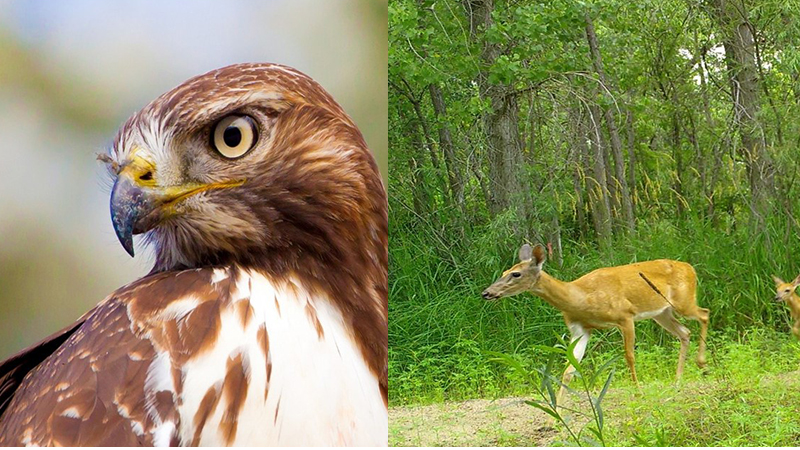
Project Team
Undergraduate Students
Collaborators
- Andrew Little
- Dustin Ranglack
Funding Source
Background:
As agricultural land use practices continue to intensify in the Midwest, these practices continue to have lasting effects on the local wildlife that rely on intact, natural habitat to survive. One way many animals manage to acquire spaces with the necessary resources for survival is by establishing home ranges. A home range can be defined as the area traversed by an individual animal in its daily routines such as finding food, mates, caring for young, and other distribution resource acquirement activities (Burt 1943). An individual uses their home range in regard to movement between preferred areas of use, such as a bobcat or deer including several forest patches in its home range due to the large abundance of food resources that could be concentrated there or by a nearby water source. Studying home ranges can teach researchers about an individual animal’s habitat preferences and movement patterns, as well as of the ecology and behavior of the species in general. This information becomes vital when managers strive to make more impactful wildlife management decisions on local and regional scales.
By knowing the home range of an animal, researchers can also estimate habitat selection, population density, and gain knowledge of space use of individuals in an area. An indirect consequence of human activity that is not yet fully understood is the temporal behaviors of animals when humans are and are not present (Gaynor et. al. 2018). This can be especially apparent in regions where a majority of the native ecosystem has been converted into a human-dominated landscape and native habitat is only found in small pockets. Likewise, additional analyses can be performed to investigate whether patterns arise between an animal’s spatial movements and its temporal activity, or comparing the spatial movements of animals interconnected through a predator-prey relationship. When predator-prey dynamics are present between two species, such as bobcats and white-tailed deer (especially fawns), studying habitat selection and temporal activity patterns from individuals of both species living in the same region can further contribute to knowledge about predator-prey dynamics in anthropogenic agricultural systems.
Goals:
- Evaluate home range sizes of deer, red-tailed hawks, and one bobcat in an intensive agricultural landscape
- Evaluate resource selection of deer, red-tailed hawks, and one bobcat in an intensive agricultural landscape